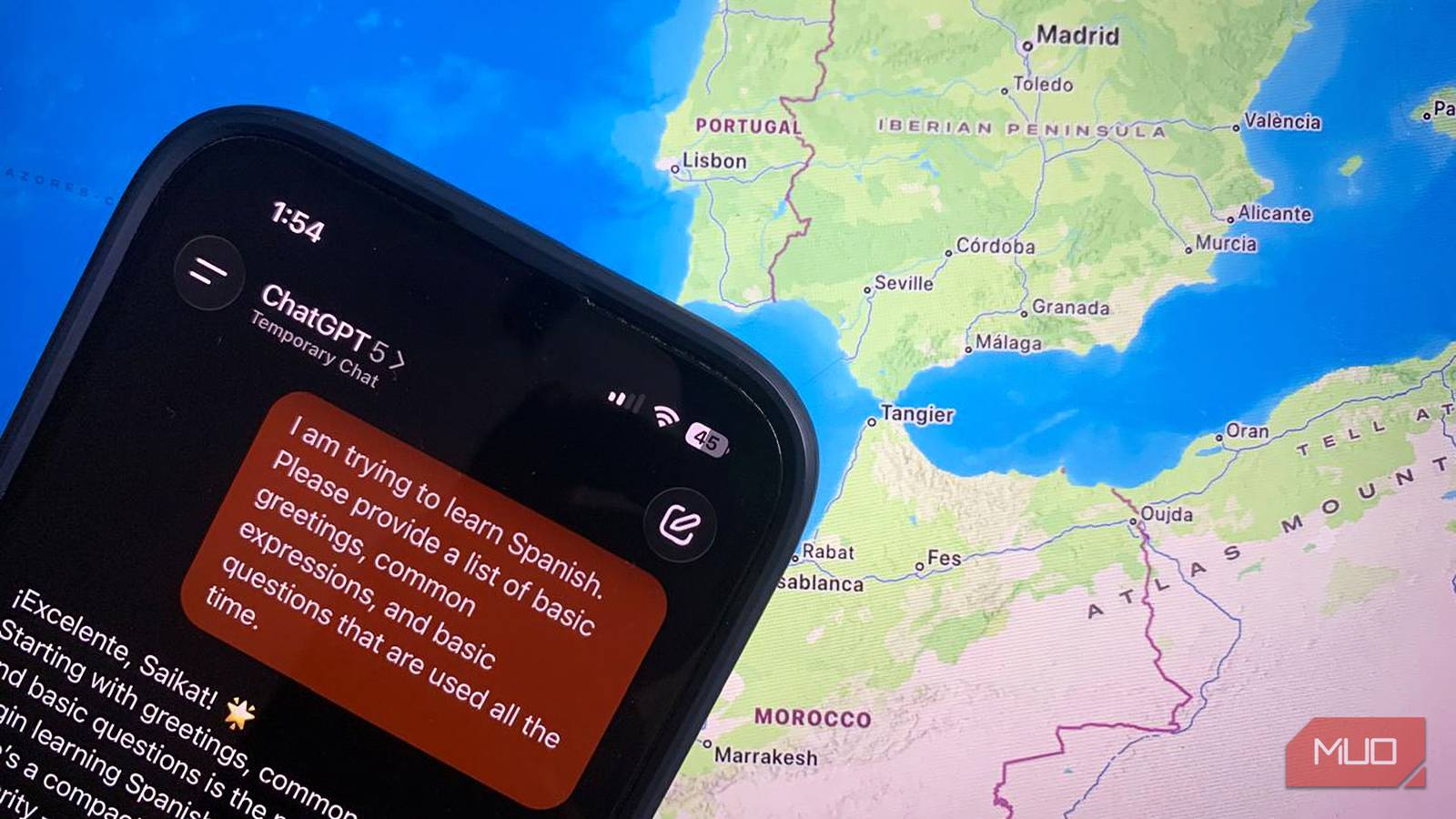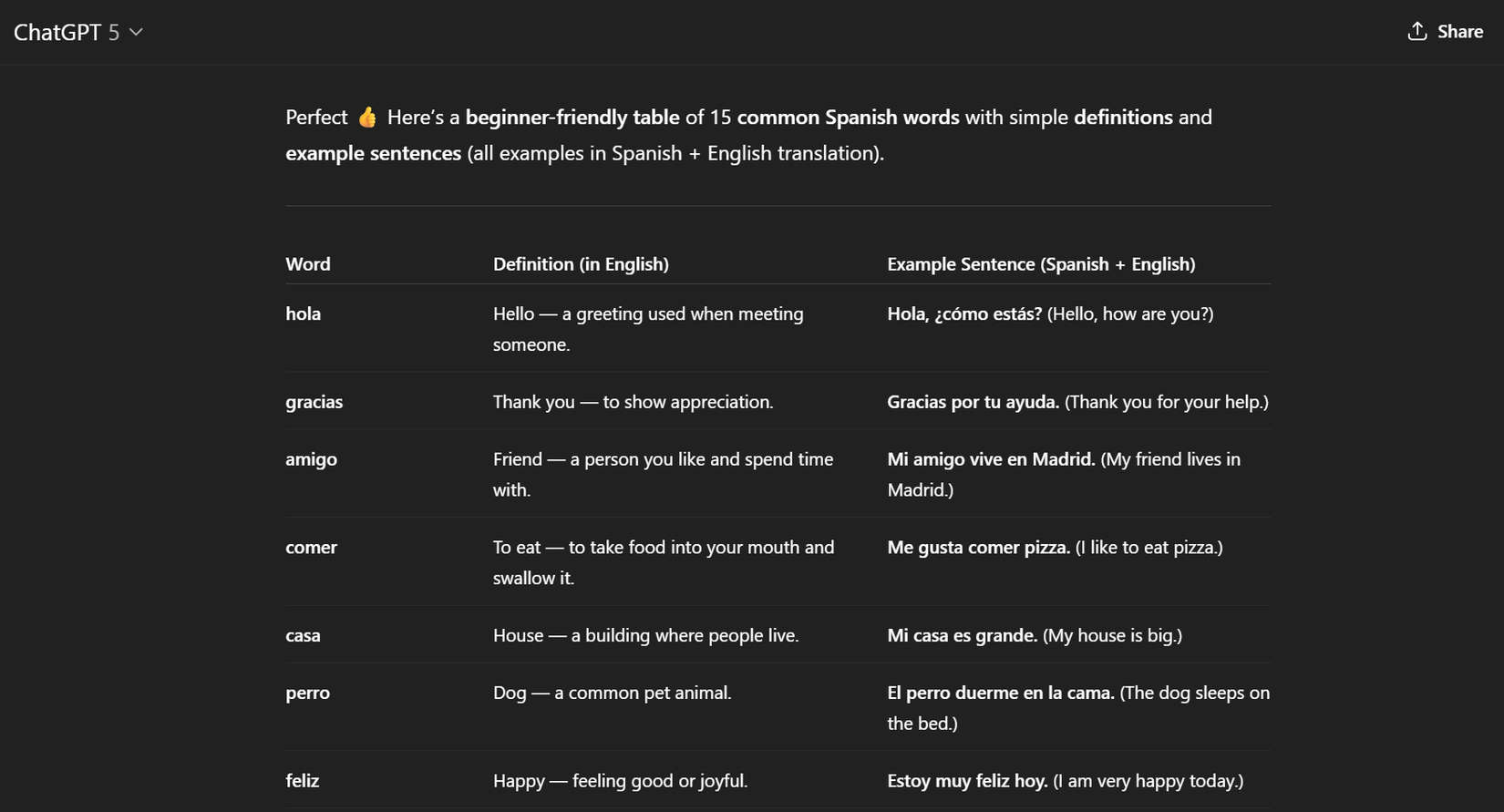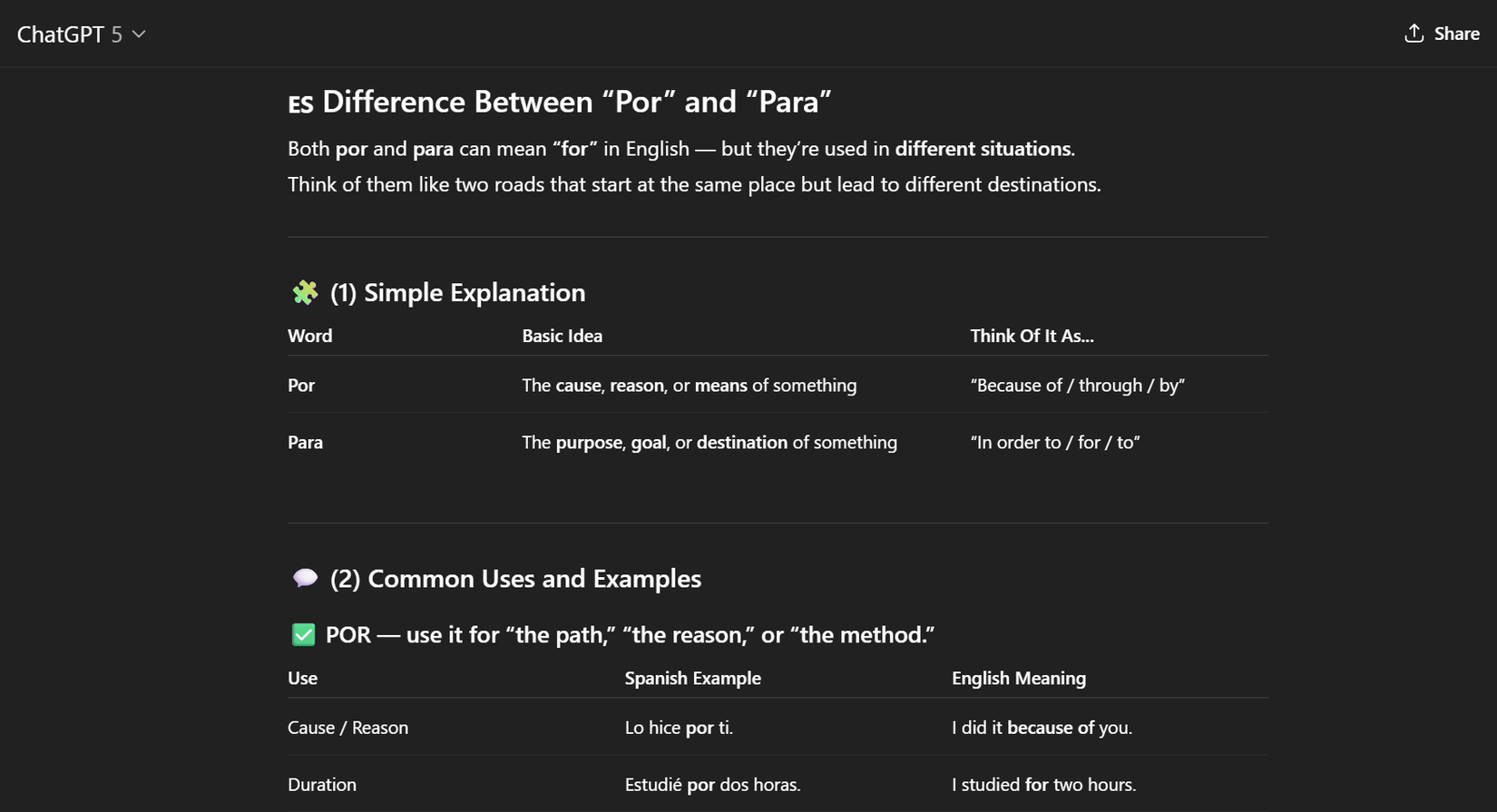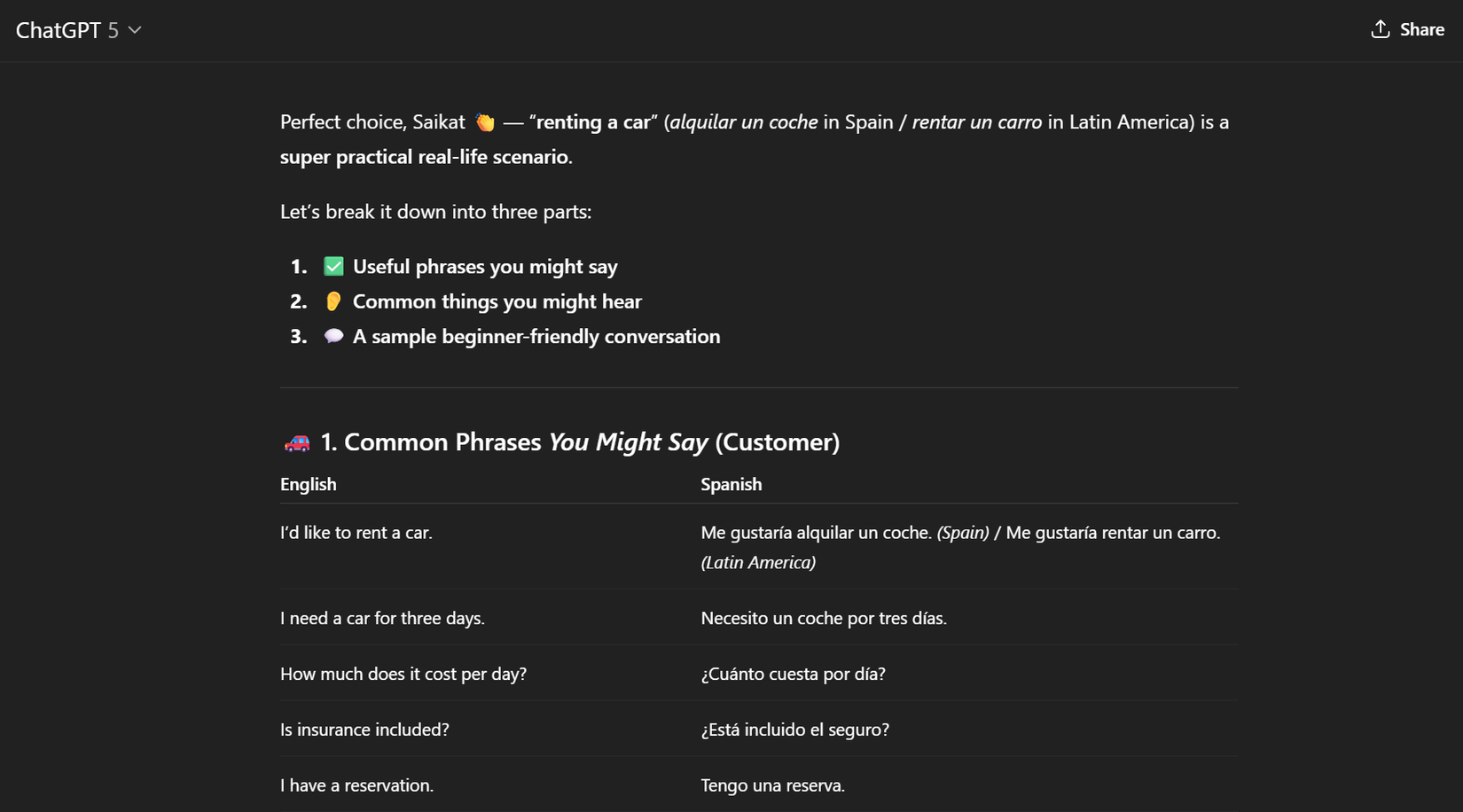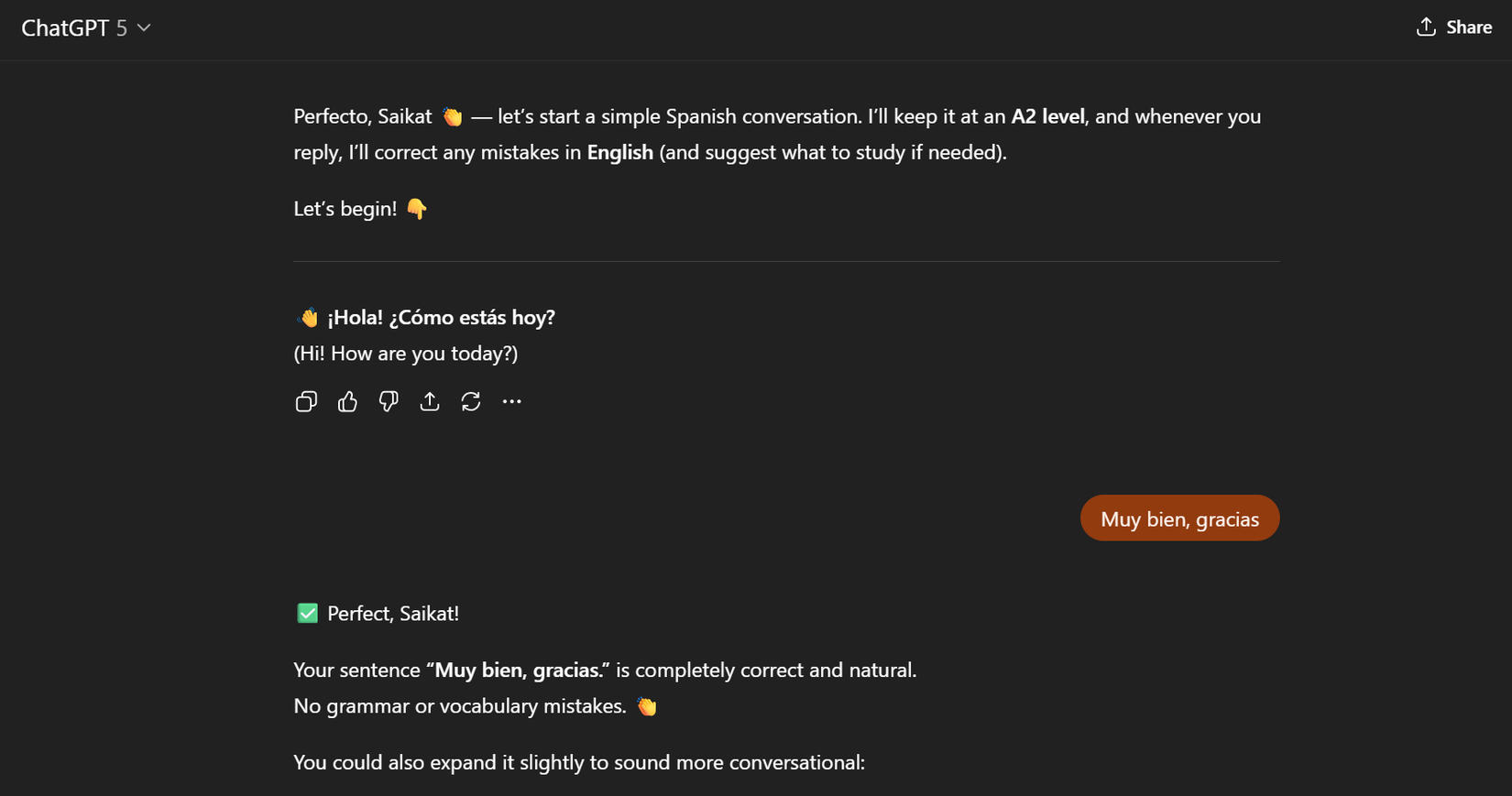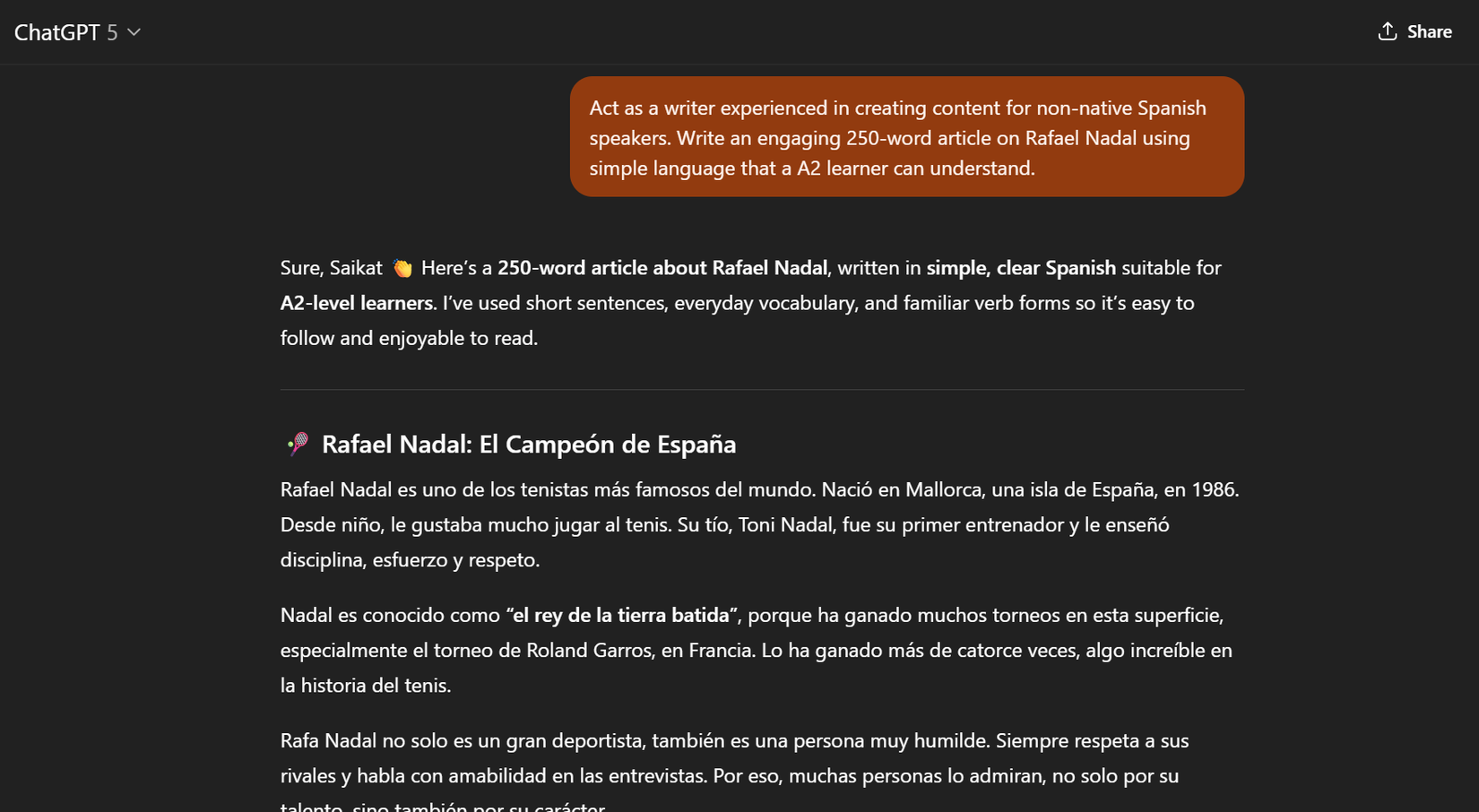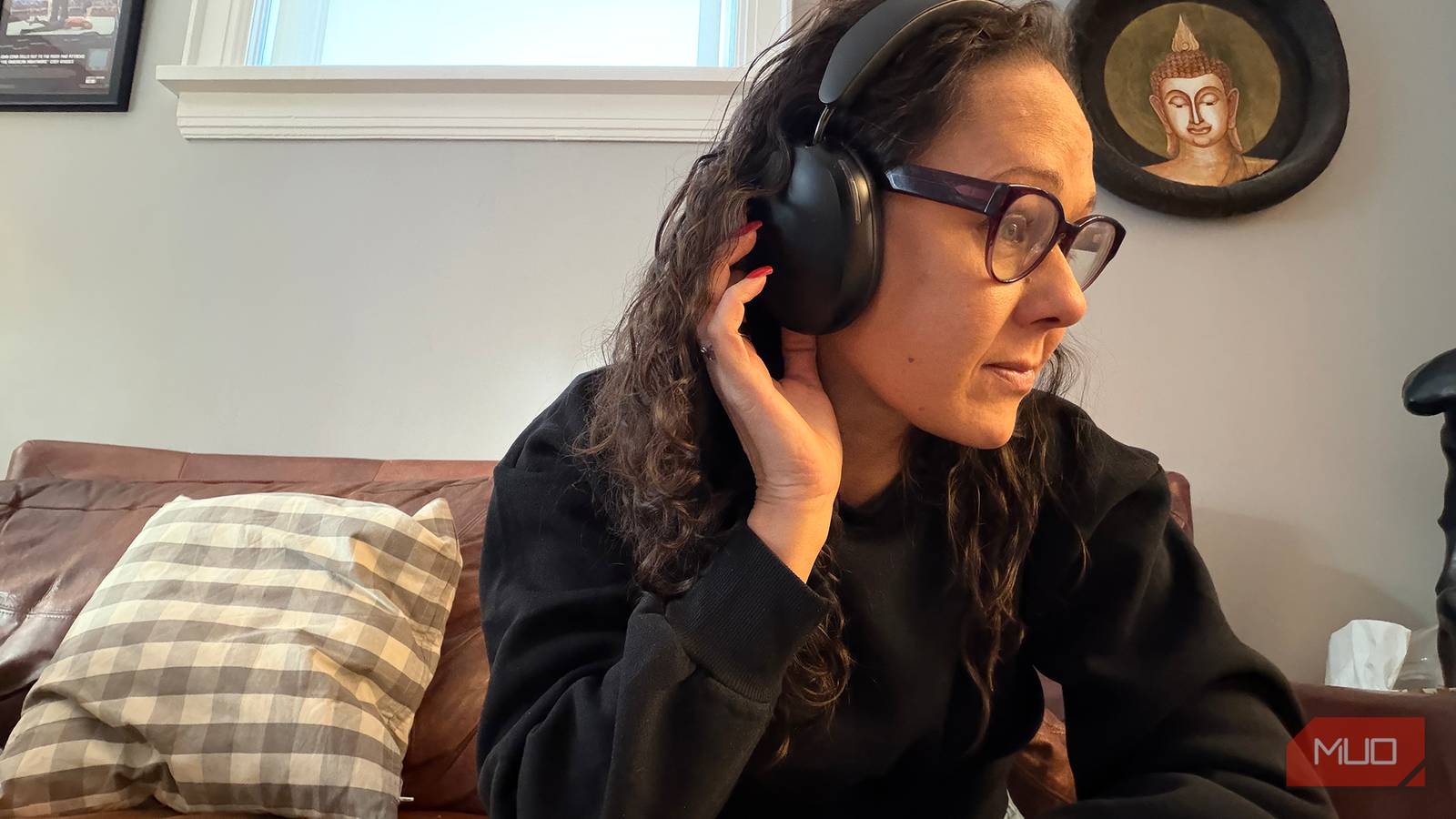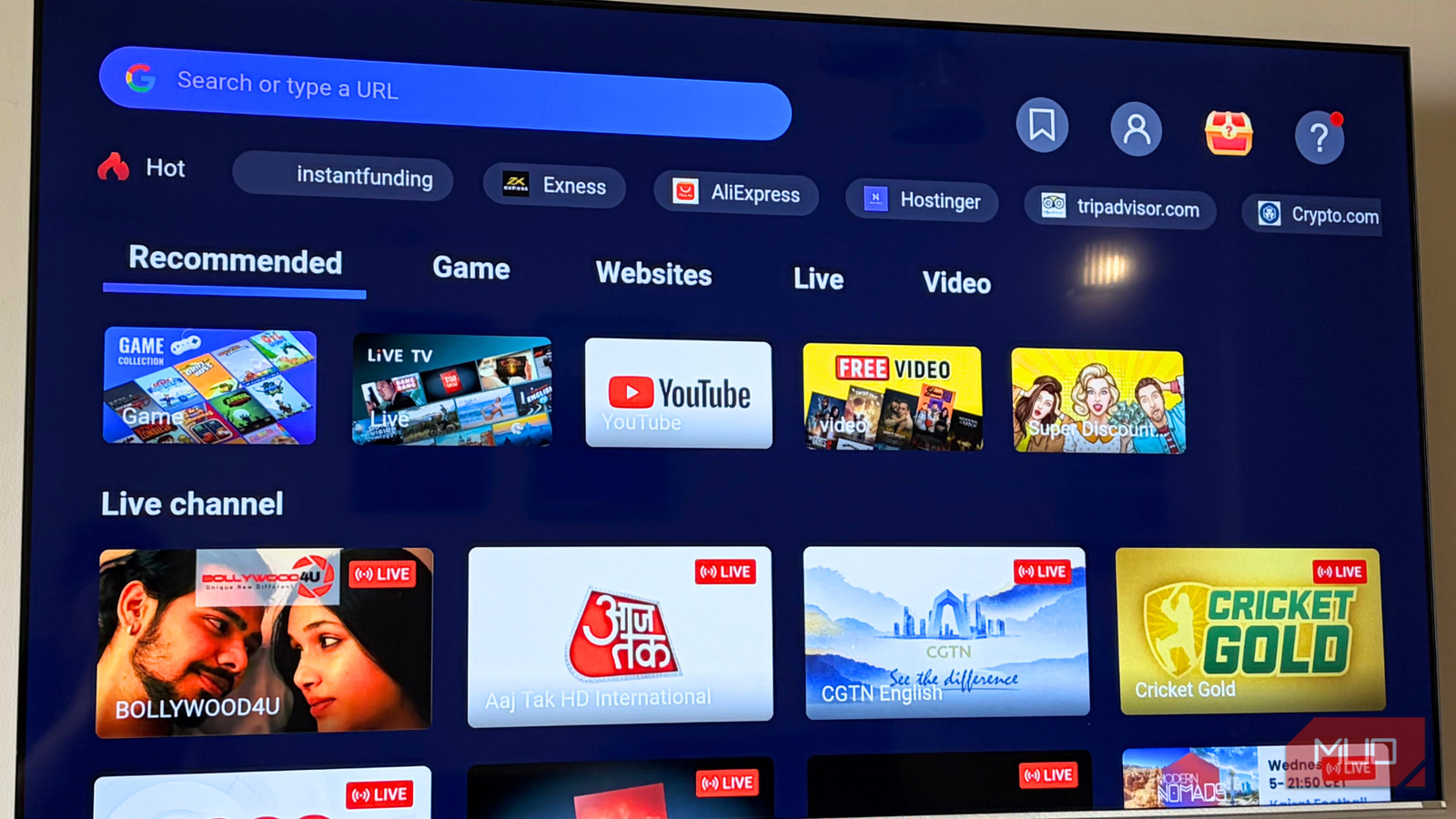We now know that large language models can act as personalized tutors, delivering natural, context-rich conversations and instant feedback. One way I am trying this out is by learning a language like Spanish.
Textbooks can be dull, and I am not a huge fan of Duolingo. My Kindle became a platform for language learning. Now, I am trying a more structured approach, side by side, using ChatGPT prompts. You too can start talking to ChatGPT in the right way. Start by setting your level (for example, [Beginner]) and providing context. Then, transform vague chats into focused study sessions.
Learn common greetings and expressions for everyday use
A language’s grammar rules can be scary. For instance, Spanish has rules for grammatical gender and numerous verb conjugations. So, I followed the recommended route of learning the most common phrases used every day. This prompt helps you get comfortable with basic greetings and expressions and start short conversations with locals during a trip.
Act as a language expert for [Target Language]. I am a complete beginner. Please provide a list of basic greetings, common expressions, and basic questions that are used all the time.
For the sake of length, I have provided generic prompts in the examples below. Always ask ChatGPT to behave like an expert, give it rich context, and be as specific as possible to create the perfect prompting formula.
2
Focus on high-frequency vocabulary for faster progress
Learn the most useful words first
Not all words are created equal. Early on, I realized I didn’t need to rote learn thousands of words; I just needed the ones that came up most often. By asking ChatGPT to apply the productivity trick based on the Pareto Principle, I received compact, daily vocabulary lists that made studying much less intimidating.
Please write a list of the most commonly used vocabulary in [Target Language]. Leverage the Pareto Principle—identify the 20% of words that will yield 80% of the results. Divide them into blocks of 20 words so I can learn a new set each day.
3
Understand new words in a simpler context
Pair easy definitions with clear example sentences
When learning new vocabulary, context is everything. This prompt helps you connect meaning with usage by providing beginner-friendly definitions and example sentences. I had a tough time with the Spanish word “llevar” (“to carry” or “to wear”) as I kept forgetting which meaning applied where.
Provide a definition and an example sentence for each of the following words: [Insert words here]. Present this in a table with three columns: Word, Definition, and Example Sentence. Ensure everything is suitable for a [Beginner Level].
4
Simplify grammar rules and see them in action
Make complex grammar easy to remember with practical, real-world examples
You don’t want to take chances with grammar in a foreign land. Learning the nuances is the toughest part, but ChatGPT helps. This prompt encourages the AI to act like a supportive language teacher, breaking complex rules into digestible parts and showing how they work in everyday contexts.
Act as a [Target Language] language teacher. Explain [Grammar Point] using simple language and examples suitable for a [Beginner Level] student. Include: (1) a brief usage explanation, (2) positive, negative, and question forms in a table, and (3) example sentences for each.
5
Learn subtle differences between similar words
Clarify confusing word pairs
Even advanced learners struggle with near-synonyms like say vs. tell or ser vs. estar. ChatGPT can clear up these tiny distinctions with simple examples.
Act as a [Target Language] language teacher. Explain the difference between [Word 1] and [Word 2] in simple terms, using examples that suit a [Beginner Level].
6
Use Study Mode for step-by-step explanations
Go through lessons interactively and quiz yourself
ChatGPT’s “personal tutor” is an interactive, step-by-step Study and learn Mode that checks your understanding as you go. It mirrors the scaffolding used by human teachers who check in after each step and correct you if you go astray.
Act like a personal language tutor. Explain [topic/grammar rule] step by step as if I were a complete beginner. Use simple language, short examples, and quiz me at the end with five questions to check my understanding.
I find this especially helpful when stuck. Slowing learning down, understanding concepts one piece at a time, and even taking breaks helps it click.
7
Practice vocabulary and get instant feedback
Use new words in sentences and get real-time feedback
Using new words in your own sentences really feels uncomfortable at first. But this is what helps them stick. This prompt allows you to test your understanding and receive immediate corrections so you don’t build bad habits.
I’m studying [Target Language] as a foreign language and want to expand my vocabulary by using new words in sentences. I’ll share one word and a sentence using it. Please check if it’s correct and natural. Identify errors in grammar, vocabulary, or structure, and provide a corrected version with a short explanation.
8
Practice real-life scenarios through dialogue
Prepare for everyday conversations
Practical everyday situations like ordering food or asking for directions are where our language skills first get tested. This prompt generates realistic conversations and key phrases for specific contexts, helping you feel more confident when speaking with native speakers. Try this on the ChatGPT app before the event and practice any corrections immediately after it.
I want to practice the following real-life scenario in [Target Language]: [Scenario]. Please teach me common phrases I might say and hear. Also, provide an example conversation for this scenario.
9
Engage in conversation and get corrected in real time
Chat naturally and get improvement tips
ChatGPT shines as a conversation partner. With this prompt, you can have natural discussions while receiving instant grammar corrections and study recommendations.
I want to have a conversation with you in [Target Language]. If I make any mistakes, please identify them. If it’s a grammar mistake, suggest what I should study to improve. Write all corrections in English. Please start the conversation.
10
Create beginner-friendly reading material
Generate short, simple texts tailored to your interests and reading level
Finding graded reading material can take time. I hack this by asking ChatGPT to write short stories about topics I like. For instance, simple fairy tales I can narrate to my niece, or combine an “explain like I’m five” simplification prompt with a Spanish translation. Remember, giving rich context and using the right prompts is all it takes to get the best results from ChatGPT.
Act as a writer experienced in creating content for non-native [Target Language] speakers. Write an engaging [Word Count, e.g., 250-word] article on [Topic] using simple language that a [Beginner/A2] learner can understand.
Making ChatGPT your personal language coach
You can turn ChatGPT into a 24/7 language coach that keeps pace with you. I felt more in control compared to my experience with different language learning apps. For pronunciations, you can practice with ChatGPT’s Live Voice mode. Also, you can ask the chatbot to provide a phonetic breakdown of a word. No single app is a magic wand, but ChatGPT and other AI chatbots give you more room to experiment and keep your language learning motivation fired up.






